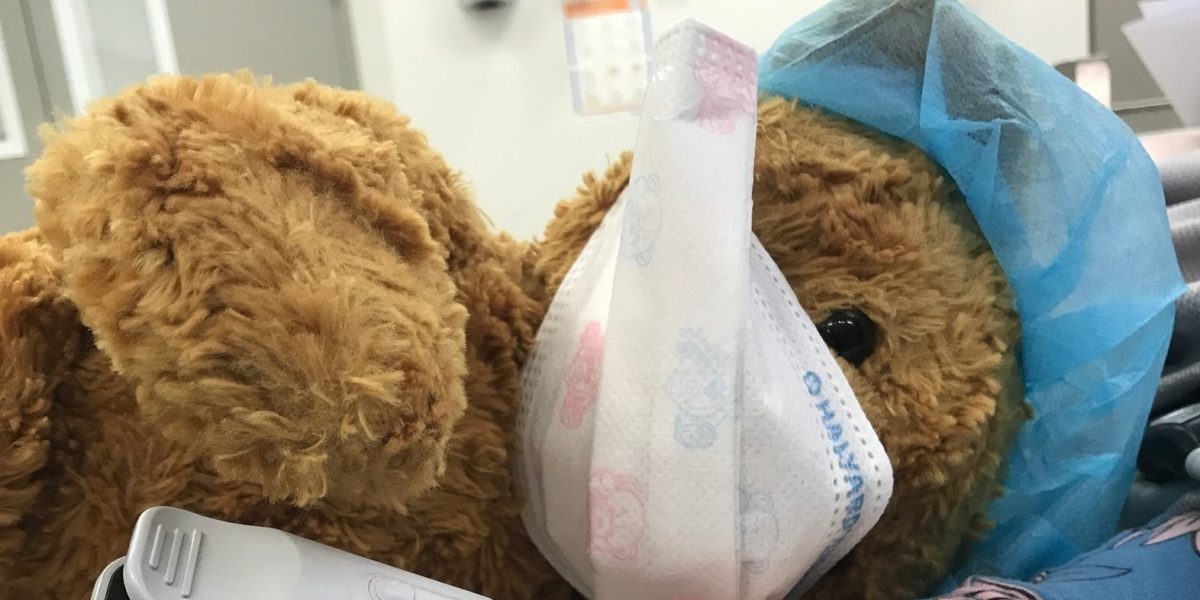Children’s Anaesthesia
Bringing your child to hospital for surgery is stressful and it's not uncommon to shed a tear or two at some point during proceedings. Even anaesthetists get a little worked up when their own children need surgery!
If it's their first time, or they are too young to recall the last experience, in the days leading up to admission it is certainly worth discussing what to expect with your child. There are several good children's books available that help explain what happens in hospital.
To avoid a needle, most children go to sleep breathing an anaesthetic gas through a face mask. They either sit on your lap, or lie close by on the operating table. The gas is not unpleasant to breathe and has a vapour smell, a bit like petrol or Texta. The Anaesthetist generally starts with a low concentration to let your child get used to it and gradually increases the strength over 30 - 60 secs. Sometimes Anaesthetists use lip smackers to scent the mask and hide the smell. As much as possible they try to make it a bit of fun but anaesthetising children this way is a bit unpredictable. Some children are very calm and placid and quietly drift off without a care. For others it's all a bit overwhelming! The best course of action in these cases is to quickly turn the gas to full. Crying is followed by deep breaths of gas which settles them quickly. Most children do not remember the experience afterwards.
Once they are asleep, they will feel floppy and lifeless in your arms. This is usually when the tears start! In your head you know everything is ok and safe, but your heart will tell you otherwise. It's perfectly normal. Someone will guide you back to your room where you can grab a very large flat white. Rest assured your baby is receiving the best of care.
What happens next depends on the operation. In most cases, once your child is asleep, a drip is inserted in the arm and a breathing tube placed in the mouth. This is routine. The breathing tube is removed at the end of the operation before wake-up. The drip is wrapped up in a bandage and remains in place until your child has recovered. This enables the Anaesthetist to give fluids, pain relief and other medicines. Anaesthesia for grommets is less invasive and most Anaesthetists simply hold a face mask while the surgeon looks in the ears with the microscope. Needles and airways are usually not required.
Older children sometimes choose to have an injection at the start, in the same way that adults are anaesthetised. It’s entirely up to them. The main advantage here is that sleep is achieved more quickly and smoothly.
Fasting Times
Fasting times for children are very important for their safety. Elective surgery will be deferred or postponed if your child is not properly fasted. However it is equally important not to over do it too. We don’t want dehydrated infants and toddlers. Check with your surgeon if you are in any doubt as the fasting times are determined on the anticipated time of surgery. At the very least, children should not have had any solids for 6 hours before surgery or any breast milk for 4 hours. Small amounts of plain water are permissible until 2 hours before surgery.
Oh No! My Child Has Caught a Cold!
This is a common dilemma and a bit of a nuisance for parents. It's usually after you've organised leave from work and grandma to get the other kids to school! We understand. The problem is that colds, even more so than in adults, make children's airways irritable. And the risk of respiratory complications under anaesthesia is higher. This means that sometimes in the interests of absolute safety surgery may need to be deferred. Call us if you are in this situation and not sure whether to proceed.
My Child's Last Anaesthetic Was So Traumatic!
Unfortunately, a bad past experience of anaesthesia or hospital can make some children feel extremely frightened and threatened about having another operation. Their behaviour after admission may be very out of character for them. They may be cranky, uncooperative and difficult to comfort and reassure. We don’t want to make things worse. In instances like this a sedative syrup beforehand may help. After swallowing the syrup your child will slowly become drowsy and often will be unable to recall much of what happens next. Talk to your Anaesthetist if you have had a bad experience in the past, or think a premed might be of help.
You are encouraged to discuss side effects with your Anaesthetist, please contact us on 8273 5666.
